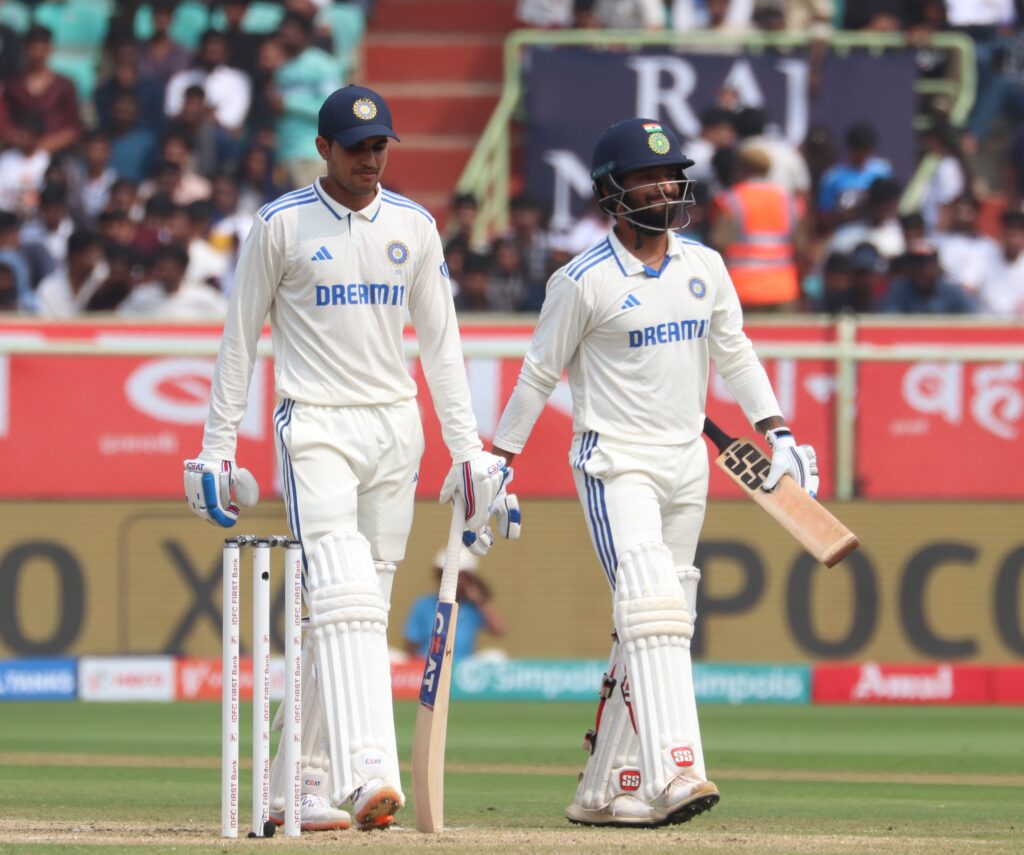
This about something that the Indian team is unlikely to deviate from. From around the 2016-17 season, they started playing with five bowlers in the XI. Easy to understand on what used to be the average Indian pitch — mostly flat — this strategy was followed overseas. It fetched rewards in different conditions and countries.
As the series against England heads towards the halfway stage, with the teams tied 1-1 and the third Test starting in Rajkot on February 15, the situation is right to take a look at this five-bowler formula, which demands that the wicketkeeper be an able contributor with the bat. It’s unlikely that this ploy will be discarded. But the time might be appropriate to ask a few questions.
A couple of glorious individual efforts notwithstanding, India’s batters are yet to do anything notable as a collective. The first innings of the first Test saw a number of batters chip in, but those runs were not enough and the team stumbled to defeat following a batting disorder in the second innings, on a fourth-day pitch assisting spin.
Agra boy Dhruv Jurel is likely to make his Test debut for India in the third match against England in Rajkot. Here’s Jurel’s, who was once an Indian Army aspirant, journey to Test cricket. @CricSubhayan with the story!#DhruvJurel #INDvENG #IndiaVsEngland@dhruvjurel21 pic.twitter.com/1cp74uUr67
— RevSportz (@RevSportz) February 14, 2024
Barring Yashasvi Jaiswal in two innings and Shubman Gill in one, the batters have not looked confident against an inexperienced English attack. Should the team still persist with six batters and rely on the spinners to score runs? As things stand, the Rajkot XI may include Rajat Patidar, who has played one Test, and Sarfaraz Khan, making his Test debut – like Dhruv Jurel, the wicketkeeper.
When India started with the six-batter formula, they had Virat Kohli, Cheteshwar Pujara and Ajinkya Rahane. Murali Vijay and KL Rahul were consistent at the top. Keeper Wriddhiman Saha was a handy bat in Indian conditions. The experience and ability of that batting order was way more than the current one, given that even Jaiswal has only played six Tests and Rohit Sharma is low on runs.
This six-batter set-up can’t be compared with the one that India had some six-seven years ago. That team had batters who made big hundreds once they got set. The present bunch is struggling to make even 40s. They are low on self-belief. To put them under pressure with additional responsibility, which every batter in a six-man order has to take, may just be asking for too much.
This is all the more striking considering the negligible role played by the fifth bowler — the second fast bowler in this case — in Hyderabad and Visakhapatnam. Mohammed Siraj and Mukesh Kumar hardly got the ball. Together, they accounted for just one wicket. Can’t the second seamer be dropped and a more accomplished batter included?
The squad has Devdutt Padikkal as another specialist batter and Washington Sundar as an all-rounder. Padikkal is yet to make his Test debut, but Washington has delivered under pressure in Australia and at home against England. He also provides the left-hand-batter option, other than bowling a bit of off-spin.
For more sports related information CLICK HERE- https://revsportz.in/category/editorial/
Washington’s presence will make the attack spin-heavy and Padikkal’s inclusion will make it a four-pronged attack. But this is not a permanent settlement. Rather, this will be a stopgap arrangement until the batters grow in confidence and Kohli and Rahul return. Looking at the tendency to crumble when cornered and the failure to score big, strengthening the batting could be a solution.
Yes, a typically flat Rajkot pitch may prompt the management to have that additional bowling option in order to take 20 wickets. But the flip side is, can your batters soak it up and deliver in unison? Going by the first two Tests, this theory has not worked yet. Will the team remain be steadfast or will it be horses for courses? That decision might as well determine the fate of the series.




